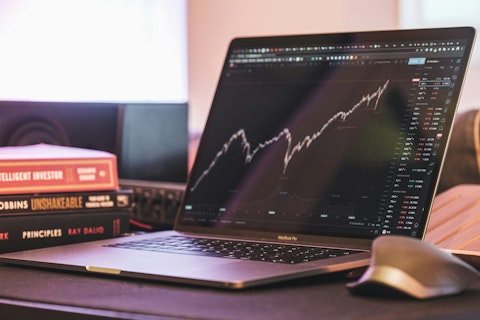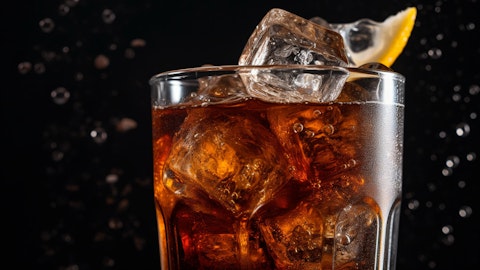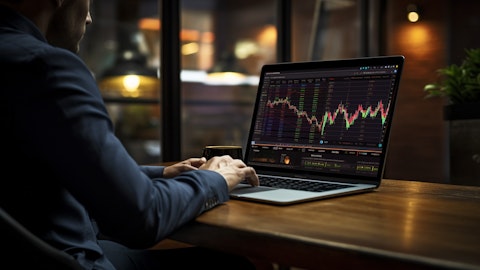There’s a particular discomfort that comes with watching an economy slow down while prices keep climbing. It feels off, like the gears of the machine are grinding against each other, rather than turning in sync. Economists have a word for this tension: stagflation. And while it hasn’t yet swallowed the U.S. economy, it’s no longer a ghost story from the 1970s. It’s a very real, very modern threat.
At its core, stagflation describes a rare economic dysfunction where growth stalls, inflation lingers, and unemployment creeps upward. It’s a policy trap: lower interest rates risk fueling inflation, while raising them threatens to further chill a cooling economy. And in 2025, that trapdoor looks increasingly ajar.
The U.S. economy already showed signs of buckling in Q1, when GDP contracted by –0.5%, the first quarterly decline in three years (BEA). That weakness wasn’t isolated, it came amid sharp declines in consumer sentiment, a drop in manufacturing orders, and a surge in front-loaded imports ahead of tariff hikes. The slowdown, in other words, wasn’t just a blip. It had fingerprints.
Meanwhile, inflation has refused to die quietly. Core PCE, the Fed’s preferred inflation gauge, sits at 3.5%, stubbornly above the 2% target. University of Michigan surveys show 1-year inflation expectations jumping to 5.1%, up from just 3.3% earlier this year, a sign that consumers are no longer convinced prices will stabilize soon. The prices are being juiced not by red-hot demand, but by supply shocks, especially tariffs.
That’s the elephant in the room. As of mid-2025, U.S. tariffs on Chinese goods stand at an effective 55%, a mix of global baseline, fentanyl-targeted duties, and legacy Section 301 penalties. If a fragile trade truce collapses in July, that number could spike to 89%. Economists have warned that these protectionist measures are injecting cost pressure across the supply chain, even as growth slows.
“Tariff-induced stagflation is now a real possibility,” says Torsten Sløk, Chief Economist at Apollo Global Management, who forecasts GDP at just 1.2% this year. Others echo the concern. JPMorgan estimates a 40% chance of recession in the second half of 2025, driven by what it calls a “stagflationary slowdown.” The Fed, meanwhile, is trapped between mandates. Officials like Austan Goolsbee insist this isn’t the 1970s redux, but even he concedes that “things could get worse,” citing the persistent inflation–unemployment tension
Markets have begun to reflect this unease. Defensive sectors are gaining favor — energy, healthcare, consumer staples — while interest-rate-sensitive growth names stumble. Equity strategists at Meketa note that “traditional monetary easing loses potency in stagflationary environments.”
It’s not just China either. The U.S. has broadened its tariff net, engaging in reciprocal duties with dozens of trade partners. That leaves companies exposed to both rising costs and weakened consumer demand, a difficult balance sheet to manage. The net effect is slower growth, hotter prices, and an equity market trying to figure out which way is up.
In this context, the idea of “stagflation stocks” isn’t academic; it’s survivalist. Investors need to think like wartime strategists: defensive positioning, supply chain resilience, and margin protection are the new alpha. What worked during the cheap-money boom won’t cut it now. Because if this is the new normal, the winners won’t be the fastest runners, they’ll be the best fortified.
Below is the list of the 12 Best Stagflation Stocks to Buy Now.

Stocks
Methodology
For our list, we’ve picked defensive stocks in the consumer-staple industry from consumer-staple ETFs. We’ve passed them through multiple filters to bring you the best stocks. These criteria included the stocks being China-light, or China-free in terms of their supply chains, ones that have gross margin durability regardless of input cost volatility, and good pricing power. Essentially, these are stocks that, in large part, would remain less affected due to the trade war. We’ve ranked them based on their hedge fund sentiment as of Q1 2025.
Why are we interested in the stocks that hedge funds pile into? The reason is simple: our research has shown that we can outperform the market by imitating the top stock picks of the best hedge funds. Our quarterly newsletter’s strategy selects 14 small-cap and large-cap stocks every quarter and has returned 373.4% since May 2014, beating its benchmark by 218 percentage points (see more details here).
12. Church & Dwight, Co., Inc. (NYSE:CHD)
Number of Hedge Fund Holders: 43
Church & Dwight, Co., Inc. (NYSE:CHD) is one of the Best Stagflation Stocks to Buy Now. In early May 2025, the company unveiled a major shift: it had begun relocating production for key items, like Waterpik flossers, out of China. Management expects this adjustment to trim roughly 80% of its ~$190 million anticipated annual tariff exposure.
On June 2, 2025, RBC Capital Markets analysts raised CHD’s rating from Sector Perform to Outperform and raised its price target from $100 to $114. RBC noted that ongoing engagement with CHD’s leadership, particularly the CEO and CFO, reinforced their view that the company’s current guidance accurately reflects ongoing challenges. They also highlighted CHD’s acquisition of Touchland as a strategic and growth-positive move, citing the brand’s strong loyalty and distribution potential. Essentially, RBC believes CHD has the right blend of tariff mitigation and portfolio expansion to regain momentum.
Church & Dwight (NYSE:CHD) makes and sells everyday essentials like Arm & Hammer, OxiClean, Waterpik, and Batiste, positioning itself as a defensive stalwart in consumer staples.
11. General Mills, Inc. (NYSE:GIS)
Number of Hedge Fund Holders: 43
General Mills, Inc. (NYSE:GIS) is one of the Best Stagflation Stocks to Buy Now. On June 26, 2025, Bank of America reaffirmed its confidence in General Mills (NYSE:GIS), and maintained a Buy rating despite trimming its price target from $63 to $61. The analysts believe the company’s fiscal 2026 guidance, though conservative, is achievable and that the market may have overreacted to recent forward-looking statements. Analysts pointed to General Mills’ long history of operational consistency and a still-strong dividend yield – now hovering near 4.7% – as key reasons to remain constructive. The note emphasized that while the path ahead includes some execution risk, especially in managing trade promotions and category reinvestments, the overall valuation remains attractive for long-term defensive positioning.
On the same day, Mizuho took a more tempered view, reiterating a Neutral stance and holding its price target steady at $60. Their analysts highlighted that while a majority of General Mills’ North American retail business is holding or gaining market share, macro uncertainty and shifting consumer behavior make near-term upside less certain. They acknowledged the company’s efforts to balance cost efficiency with innovation, particularly its push into fresh pet food, but chose to remain on the sidelines until there’s clearer evidence that growth initiatives are translating into stronger volume trends.
General Mills (NYSE:GIS) is one of the largest packaged food companies in the United States, known for brands like Cheerios, Betty Crocker, Pillsbury, Haagen-Dazs, Nature Valley, and Blue Buffalo.
10. Kimberly-Clark Corporation (NASDAQ:KMB)
Number of Hedge Fund Holders: 45
Kimberly-Clark Corporation (NASDAQ:KMB) is one of the Best Stagflation Stocks to Buy Now. In June 2025, Kimberly-Clark announced a sweeping joint venture with Brazilian pulp giant Suzano, marking one of the company’s boldest strategic pivots in years. Under the deal, Suzano will acquire a 51% stake in Kimberly-Clark’s international tissue business for $1.73 billion in cash, while Kimberly-Clark retains 49% and continues licensing its brands, including Kleenex and Scott, to the new entity. The transaction is expected to close by mid-2026.
The move is a calculated retreat from the global tissue battlefield. By offloading 22 factories and operations in over 70 countries, Kimberly-Clark isn’t shrinking, it’s streamlining. The aim is to refocus on higher-margin personal care and North American tissue, while letting Suzano drive efficiency in pulp-intensive operations abroad. Estimated cost synergies of $175 million annually make the venture attractive, but the timing is just as strategic.
Kimberly‑Clark is best known for everyday essentials like Huggies diapers, Kleenex tissues, Scott paper towels, and Depend adult incontinence products.
9. Mondelez International, Inc. (NASDAQ:MDLZ)
Number of Hedge Fund Holders: 52
Mondelez International, Inc. (NASDAQ:MDLZ) is one of the Best Stagflation Stocks to Buy Now. Mondelez is urging the EU to delay the implementation of its upcoming deforestation law. The regulation, set to kick in by the end of 2025, would require all cocoa and palm oil imports to be certified deforestation-free.
Mondelez isn’t opposing the law’s spirit, but says smallholder farmers across West Africa lack the digital infrastructure needed to comply, especially amid record-high cocoa prices and weather-driven crop failures. The company is asking for a 12-month extension to avoid supply disruption. While the headlines sound tense, the long-term impact is likely minimal. Mondelez has already committed to traceable, ethical sourcing and sees this as a timing issue, not a challenge to its overall strategy.
Lindsell Train Global Equity Fund had the following to say about Mondelez International, Inc. (NASDAQ:MDLZ) in their Q1 2025 investor letter:
“Heineken and Mondelez International, Inc. (NASDAQ:MDLZ) also possess strong defensive qualities, because they sell low ticket, frequently-purchased items, protected by brand power built up over decades of cumulative advertising spend. One can see clear evidence of the consumer loyalty they enjoy via their resilient volume growth figures over the last few years, despite the considerable price increases they’ve been obliged to pass through in the post-Covid inflationary period.”
8. The Clorox Company (NYSE:CLX)
Number of Hedge Fund Holders: 53
The Clorox Company (NYSE:CLX) is one of the Best Stagflation Stocks to Buy Now. On June 26, Jefferies lowered its price target on Clorox (NYSE: CLX) from $167 to $145, while reiterating a Buy rating on the stock. The firm cited short-term uncertainty stemming from Clorox’s upcoming rollout of its U.S. Enterprise Resource Planning (ERP) system. As the transition unfolds, Jefferies expects timing disruptions in shipping to make near-term modeling unusually difficult, potentially creating pockets of both unexpected operating leverage and deleverage.
Looking ahead to fiscal 2026, the firm believes Clorox is likely to guide for organic sales to decline between 2% and 4%, with EPS dropping in the low-teens percent range. Jefferies also warned that current consensus estimates are too optimistic and will require what it called a “recalibration.”
Despite the turbulence, the firm sees a buying opportunity in what it describes as the “messiness” of this transition period, arguing that long-term investors could benefit as the company works through short-term friction.
Clorox (NYSE:CLX) is a U.S.-based consumer goods company best known for its namesake bleach, but its portfolio spans far beyond cleaning products. It owns well-known brands like Pine-Sol, Burt’s Bees, Glad, and Kingsford, covering categories from home care and trash bags to natural personal care and grilling.
7. Keurig Dr Pepper Inc. (NASDAQ:KDP)
Number of Hedge Fund Holders: 54
Keurig Dr Pepper Inc. (NASDAQ:KDP) is one of the Best Stagflation Stocks to Buy Now. A Texas court recently ruled that Keurig Dr Pepper can legally terminate its bottling and distribution agreement with Reyes Coca‑Cola Bottling covering parts of California and Nevada, setting the contract to end on October 27, 2025. This decision is part of KDP’s broader strategy to shift to direct store delivery, hoping to wield greater control over logistics and retailer relationships as it competes more aggressively in key markets.
Reyes has signaled that they’re reviewing the verdict and may appeal, but KDP is clearly positioning itself to streamline operations and optimize supply-chain execution ahead of next year’s full delivery transition. Analysts say winning this case could allow KDP to improve margins by eliminating third-party middlemen and reallocating resources toward brands like Dr Pepper, Keurig, and GHOST. It also fits neatly into KDP’s defensive-staples narrative, strengthening distribution control amid broader economic uncertainty.
Keurig Dr Pepper (NASDAQ:KDP) is a North American beverage company with a dual grip on the market, combining legacy soda brands like Dr Pepper, 7UP, and Canada Dry with a dominant position in single-serve coffee through its Keurig brewing systems.
6. The Kroger Co. (NYSE:KR)
Number of Hedge Fund Holders: 64
The Kroger Co. (NYSE:KR) is one of the Best Stagflation Stocks to Buy Now. On June 23, Morgan Stanley raised its price target on Kroger to $76 on June 23, basically signaling cautious optimism about the grocer’s path forward. While the firm held its Equalweight rating, it noted that Kroger’s revenue trajectory is gaining pace, and recent market share wins point to real momentum.
The bank sees earnings growth accelerating through the rest of 2025, potentially outpacing the modest 1.3% Kroger logged in Q1. Add in a 20-year dividend track record and a 1.78% yield, and the picture becomes one of quiet, consistent resilience, especially in a shaky macro environment where tariffs and consumer uncertainty are back on the radar.
Morgan Stanley’s scenario modeling suggests room for upside, with a bull case price of $105. The bear case lands at $45, with the firm seeing current positioning slightly tilted in investors’ favor. Modest tailwinds like food inflation and improvements in Kroger’s pharmacy segment could help, but it’s a balancing act, with competition and demand softness lurking in the backdrop.
Kroger (NYSE:KR) is one of America’s largest traditional grocery chains. It operates over 2,700 supermarkets, fuel stations, pharmacies, and digital services across 35 states. Its private-label penetration (40%+), strong loyalty programs, and expanding e-commerce presence make it a defensive anchor for consumer portfolios.
5. Colgate-Palmolive Company (NYSE:CL)
Number of Hedge Fund Holders: 65
Colgate-Palmolive Company (NYSE:CL) is one of the Best Stagflation Stocks to Buy Now. On May 28, Piper Sandler reiterated its Overweight rating on Colgate-Palmolive (NYSE: CL) and held its price target at $109, implying roughly 18% upside from current trading levels. The reaffirmation followed a private meeting with CEO Noel Wallace and Investor Relations head John Faucher, which gave the firm a closer look at the company’s strategic footing.
The conversation focused heavily on how Colgate is steering through the current tariff dynamics, a situation the firm believes the company is handling efficiently and with minimal disruption. Piper Sandler described Colgate as one of the more stable names within its consumer staples coverage, citing its global footprint and shareholder-focused philosophy as core strengths.
The analysts came away with increased confidence in Colgate’s ability to manage international complexity, maintain consistent performance, and stay aligned with its long-standing emphasis on value creation. That blend of steadiness and strategic agility is what continues to anchor their bullish view on the stock.
Colgate-Palmolive Company (NYSE:CL) is a global consumer goods leader specializing in oral care, personal hygiene, and pet nutrition. With iconic brands like Colgate, Palmolive, Tom’s of Maine, and Hill’s Science Diet, its products remain essential even during economic slowdowns, cementing its status as a defensive staple.
4. PepsiCo, Inc. (NASDAQ:PEP)
Number of Hedge Fund Holders: 71
PepsiCo, Inc. (NASDAQ:PEP) is one of the Best Stagflation Stocks to Buy Now. On June 24, RBC Capital reaffirmed its Sector Perform rating on PepsiCo (NASDAQ: PEP) and kept its price target steady at $148, essentially signaling a wait-and-see approach as the company works through ongoing revenue struggles.
The firm flagged PepsiCo’s underperformance as a sticking point for investors, many of whom are holding back, unsure whether the bottom is in. RBC doesn’t see an imminent rebound; in fact, they warned the company’s top-line pressures could intensify before recovery kicks in.
For sentiment to shift, RBC says PepsiCo (NASDAQ:PEP) needs to spark growth again — whether through smarter pricing moves, sharper product innovation, or a helping hand from a better macro environment. Until those levers start moving in unison, the firm views the stock’s upside as limited in the near term.
Despite the cautious tone, RBC emphasized its respect for PepsiCo’s brand power and long-term potential, but the message was clear: not quite the moment to pounce. These headwinds notwithstanding, PepsiCo is a strong stagflation play.
PepsiCo is a balanced powerhouse—renowned for snack brands like Lay’s, Doritos, Cheetos, and Quaker, alongside beverage favorites including Pepsi, Gatorade, and Bubly.
3. The Coca‑Cola Company (NYSE:KO)
Number of Hedge Fund Holders: 87
The Coca‑Cola Company (NYSE:KO) is one of the Best Stagflation Stocks to Buy Now. Now, the company is undergoing a quiet digital transformation — one that’s already paying off. Roughly 65% of its marketing spend has shifted to digital channels, supported by AI-driven personalization at scale. On the operational side, AI tools have helped cut downtime by 20% through predictive maintenance, while route optimization has shaved off 8% in fuel use. These digital efficiencies contributed to a 140 basis point boost in operating margin last quarter, generating over $550 million in free cash flow, clear signs that Coca-Cola is adapting its legacy machinery to the 21st century.
But legacy doesn’t mean immune to disruption. In June, a Coca-Cola bottling plant in Brazil was temporarily shut down over suspected coolant contamination. Though no health incidents were reported, production was paused pending safety checks. The swift response underscored Coke’s operational vigilance and strong regulatory compliance—reminding investors that while the company embraces tech, it remains grounded in execution and global risk control.
Coca-Cola (NYSE: KO) is one of the most iconic consumer staples globally, offering a wide beverage portfolio ranging from Coke and Sprite to Minute Maid and Smartwater. Known for its global scale and brand power, Coca-Cola has long been considered a reliable defensive stock in uncertain markets.
2. The Procter & Gamble Company (NYSE:PG)
Number of Hedge Fund Holders: 88
The Procter & Gamble Company (NYSE:PG) is one of the Best Stagflation Stocks to Buy Now. Now, the company is preparing for its most ambitious internal overhaul in years. In June 2025, P&G announced a sweeping two-year transformation plan aimed at sharpening efficiency and safeguarding margins in an increasingly turbulent global market. The plan includes the elimination of up to 7,000 non-manufacturing jobs, part of a broader effort to streamline management layers and reduce overhead.
P&G expects to incur roughly $1.6 billion in restructuring charges, which will support supply chain digitization, automation, and centralized production planning. The move is a direct response to mounting cost pressures, global tariff threats, and slowing demand in key markets like China.
Rather than waiting to be caught off guard, P&G is proactively tightening its operational model, seeking resilience not just through pricing, but through structural adaptability. The company says this transformation will enhance long-term agility and free up capital for innovation and margin defense, signaling to investors that it intends to stay ahead of the curve rather than simply react to it.
Procter & Gamble (NYSE: PG) is one of the world’s largest consumer goods companies, with a portfolio spanning household staples like Tide, Pampers, Gillette, and Oral-B. Its scale, brand loyalty, and necessity-driven products make it a perennial favorite in defensive stock portfolios.
1. Costco Wholesale Corporation (NASDAQ:COST)
Number of Hedge Fund Holders: 93
Costco Wholesale Corporation (NASDAQ:COST) is one of the Best Stagflation Stocks to Buy Now. In 2025, Costco is doubling down on its global footprint and digital transformation. The company announced plans to open 27 to 29 new warehouses this year, expanding into regions like South Korea and Sweden while strengthening presence in the U.S. These additions aren’t just about square footage—they’re strategic anchors aimed at fortifying Costco’s revenue against regional shocks and macro volatility.
On the digital front, Costco is integrating AI-powered systems into its e-commerce operations. These tools help optimize inventory replenishment, reduce waste, and cut down on out-of-stock events, and enhance both operational efficiency and customer satisfaction. The impact is already visible: in Q3 2025, Costco’s e-commerce sales jumped 11.6%, contributing to a 6.8% increase in total net sales.
Costco Wholesale Corporation is a membership-based retail giant, renowned for its no-frills model, competitive pricing, and customer loyalty. With a core focus on value and volume, Costco’s business thrives on scale and efficiency, traits that position it squarely in the defensive stock category.
While we acknowledge the potential of COST to grow, our conviction lies in the belief that some AI stocks hold greater promise for delivering higher returns and have limited downside risk. If you are looking for an AI stock that is more promising than COST and that has 100x upside potential, check out our report about this cheapest AI stock.
READ NEXT: 30 Stocks That Should Double in 3 Years and 11 Hidden AI Stocks to Buy Right Now.
Disclosure: None. Insider Monkey focuses on uncovering the best investment ideas of hedge funds and insiders. Please subscribe to our free daily e-newsletter to get the latest investment ideas from hedge funds’ investor letters by entering your email address below.




